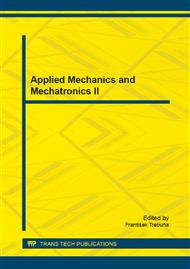p.154
p.160
p.165
p.174
p.182
p.188
p.195
p.204
p.213
Finite Element Simulation of Bending of Steel Bar Including Plasticity
Abstract:
The article presents the use of finite element method for the simulation of cold forming process. The numerical simulation of a real technological operation of bending a rod by an industrial bender. Within the simulation, different types of nonlinearities, namely of material nonlinearity, resulting from the flexible plastic material properties of the rod, are considered, geometric nonlinearities result from large displacement and nonlinear contact. This paper briefly describes the elastic – plastic material model. Numerical analysis confirmed the appropriateness of the use of finite element method in the simulation of technological operations and the eventual possible optimization of these processes.
Info:
Periodical:
Pages:
182-187
Citation:
Online since:
November 2015
Authors:
Keywords:
Price:
Сopyright:
© 2015 Trans Tech Publications Ltd. All Rights Reserved
Share:
Citation:


